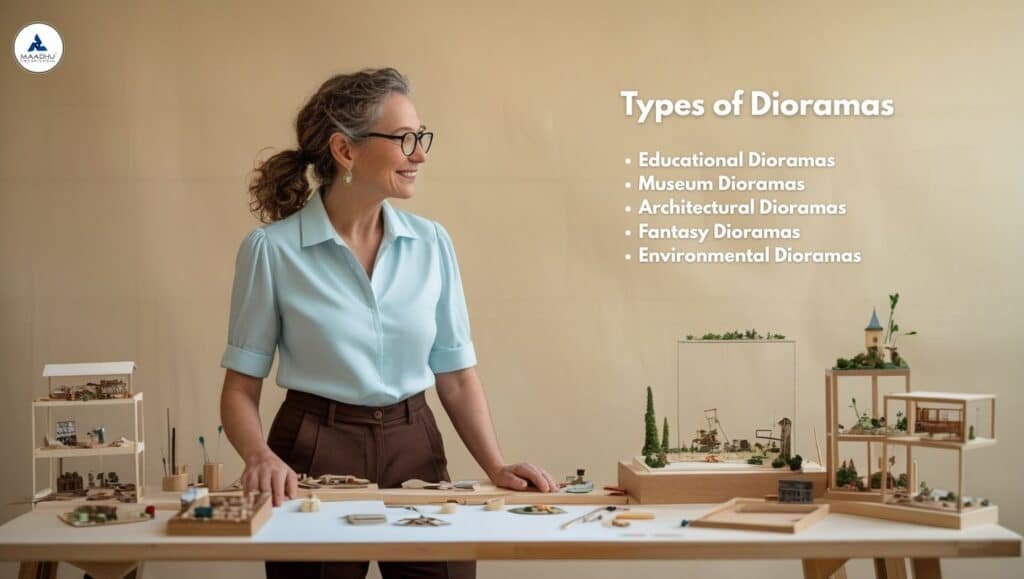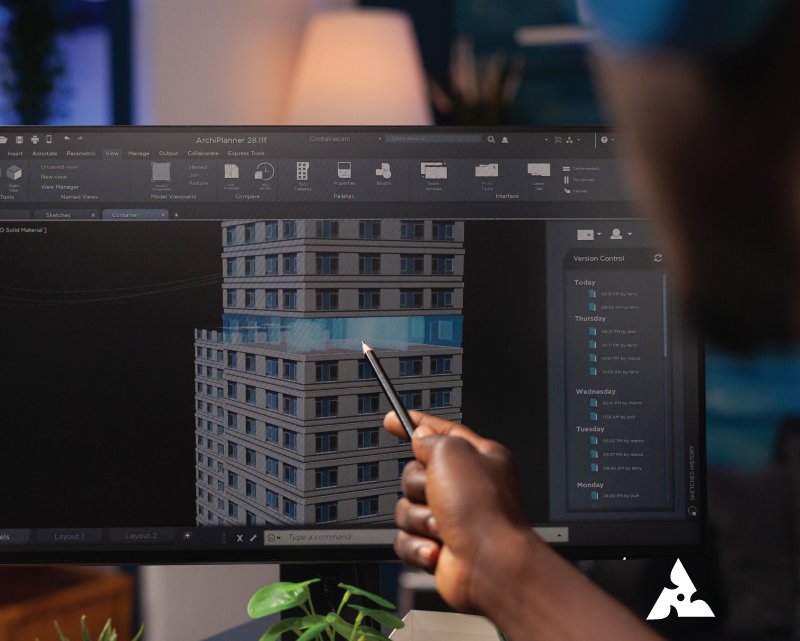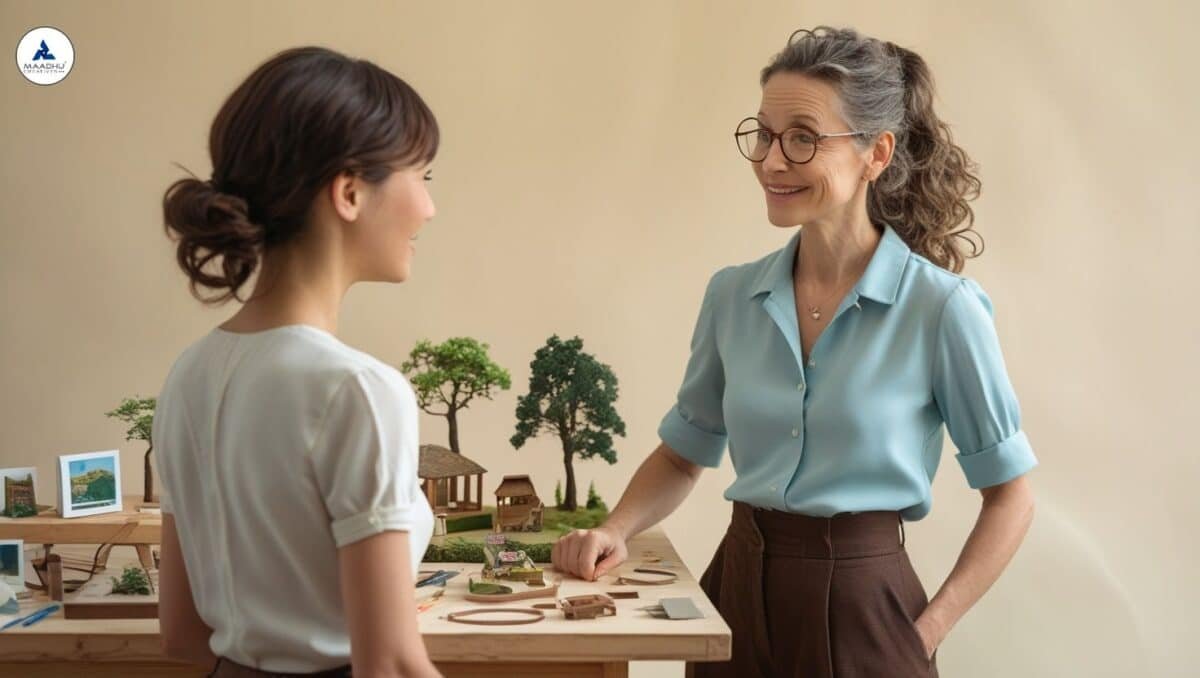How to Make a Miniature Diorama: Step-by-Step for Beginners
Table of Contents
Creating a small diorama is a fun and creative way to show your story in a small space. Whether you are a student making a school project or just a fun hobbyist wanting to use your imagination, a diorama can be an enjoyable project. This blog will walk you through all of the steps of creating a small diorama, explain what a diorama is, and provide some ideas to help you get started. Throughout this blog, we will use simple language to help you understand better, and keep everything as simple as possible too.
What is a Diorama?
Before you begin creating a model, it is necessary to determine what a diorama is. A diorama is a detailed three-dimensional model of a scene containing miniature representations of objects, people, or figures, and background. Dioramas can be used to represent a story, a real or historical event, a natural setting, or an imagined event.
Dioramas can be simple or quite elaborate representations, and typically can be built in a box, platform, or glass case. Dioramas can be useful in many contexts, including teaching, museums, architecture, and hobbies. Dioramas portray depth, scale, and perspective with a visual compactness unique to other models.
Diorama Definition and Meaning
- Diorama definition: A diorama is a three-dimensional miniature representation of a scene that is made with figures, a background, and a landscape.
- Diorama meaning: It means a lifelike portrayal of a moment in time, presented at a small scale, in an artistic way using craft materials.
History of Dioramas:
Dioramas have a rich and interesting story that dates back to the early 19th century. However, if we trace their origins back, they can be traced to the 1800s or more. The first known use of the word “diorama” was by French artist Louis Daguerre, the creator of the daguerreotype (the first type of photography). Daguerre and his partner, Charles Marie Bouton, debuted a theatrical display called the “Diorama” in Paris in 1822. The Diorama consisted of large, elaborate paintings on semi-transparent screens, and the artists created effects using light to alter the paintings to depict alternate times of day and different types of weather.
From there, the concept evolved. Museums would begin to utilize dioramas for showcasing scenes depicting natural history, battles, and other historical events. Schools began using them as educational devices to teach subjects. Hobbyists began utilizing dioramas to express their artistic interest, and now diorama makers and diorama collectors are growing in popularity around the globe as a hobby, especially among model builders, artists, and tellers of stories.
Types of Dioramas

Dioramas come in many forms and can be created with several different themes. Here are several common types:
- Educational Dioramas: Educational applications can commonly be found in schools to help students get a grasp on geography, sciences, and history. For example, a volcano model to explain structural or chemical action, or a battle scene from Indian history.
- Museum Dioramas: Museum exhibits that represent a historical moment or live wildlife action, or a cultural scene.
- Architectural Dioramas: for architects or builders to illustrate building plans or layouts.
- Fantasy Dioramas: Popular in gaming or storytelling to include an imaginary world, outer space, or superheroes battling.
- Environmental Dioramas: a way to display natural habitats, forests, oceans, or mountains. Often made with recycled or eco-friendly products.
Why Make a Miniature Diorama?
Making a miniature diorama can be useful for many reasons:
- School projects
- Hobby collections
- Home decoration
- Presentation of ideas
- Artistic expression
It is also a relaxing and rewarding hobby that lets you use your hands and imagination.
Tools and Materials Needed
To begin diorama making, gather the following basic items:
Base:
- Cardboard, wooden board, or a sturdy box lid
Structure & Background:
- Foam board or cardboard (for walls, mountains, or buildings)
- Colored paper or paint (for background sky, ground, etc.)
Objects and Figures:
- Small plastic or clay figures (people, animals, vehicles)
- Natural materials like sand, rocks, sticks, and grass
- Miniature trees and models (buy or make your own)
Adhesives & Tools:
- Glue (white glue or hot glue)
- Scissors, cutter, pencil, ruler
- Paints and brushes
Optional:
- LED lights (for lighting effects)
- Cotton (for clouds or smoke)
Step-by-Step Guide: How to Make a Diorama

Diorama Ideas for Beginners
If you are not sure what to build, here are some simple ideas:
- A forest with animals
- Village scene
- School classroom
- Indian festival scene
- Mountain landscape
- Desert with camels
- Railway station model
- Underwater world
- Space exploration scene
- Indian freedom movement moment
These ideas are simple, budget-friendly, and great for beginners.
Common Mistakes to Avoid
Avoid mixing figures that are different sizes, this destroys the scale of your scene. Please do not fill up the base with too many objects, it ought to look cluttered to be interesting inside a diorama. Not making a layout plan often results in poor selection and arrangement of objects. Similarly, rushing the drying time of glue or paint can lead to smudged and weak joints. Finally, when you finish, all elements should be glued down so they do not fall off.
Tips for Better Diorama Making
- Keep your theme clear and simple.
- Use lightweight materials for easy handling.
- Pay attention to colors and positioning.
- Always work neatly and patiently.
- Look at reference photos for inspiration.
- Reuse materials from your home to save costs.
- Don’t overcrowd the scene and focus on key details.
Conclusion
Now you know how to make a miniature diorama step by step. With some forethought and visualization, you can create a lovely and appropriate diorama model. This activity is not only a learning experience but also a fun and rewarding experience. Whether you are building a project for school or a more detailed scene for your home, you can take your vision and create it in the form of a diorama.
Once you are more experienced, you can explore more advanced techniques, tools associated with the profession, and even enter diorama competitions. Dioramas are a hobby for everyone at every age and ability. You can try this out, start small, think about the bigger picture, and most importantly, have a great time creating your miniature storytelling world!
FAQs
A solid piece of cardboard or a wooden board is ideal for a diorama base. These materials provide strong support and help prevent the model from tipping over.
Using colors that are natural to the earth, realistic textures like sand or grass, or whatever fits the real-life scene, and proportions of where the figures Mesa’s figures and other elements live, places each figure in a realistic position, creating lifelike scenes.
Yes! Paper towel rolls, old boxes, plastic caps, and any leftover craft supplies can all be included. Not only are you saving money, but you are also saving the planet!









